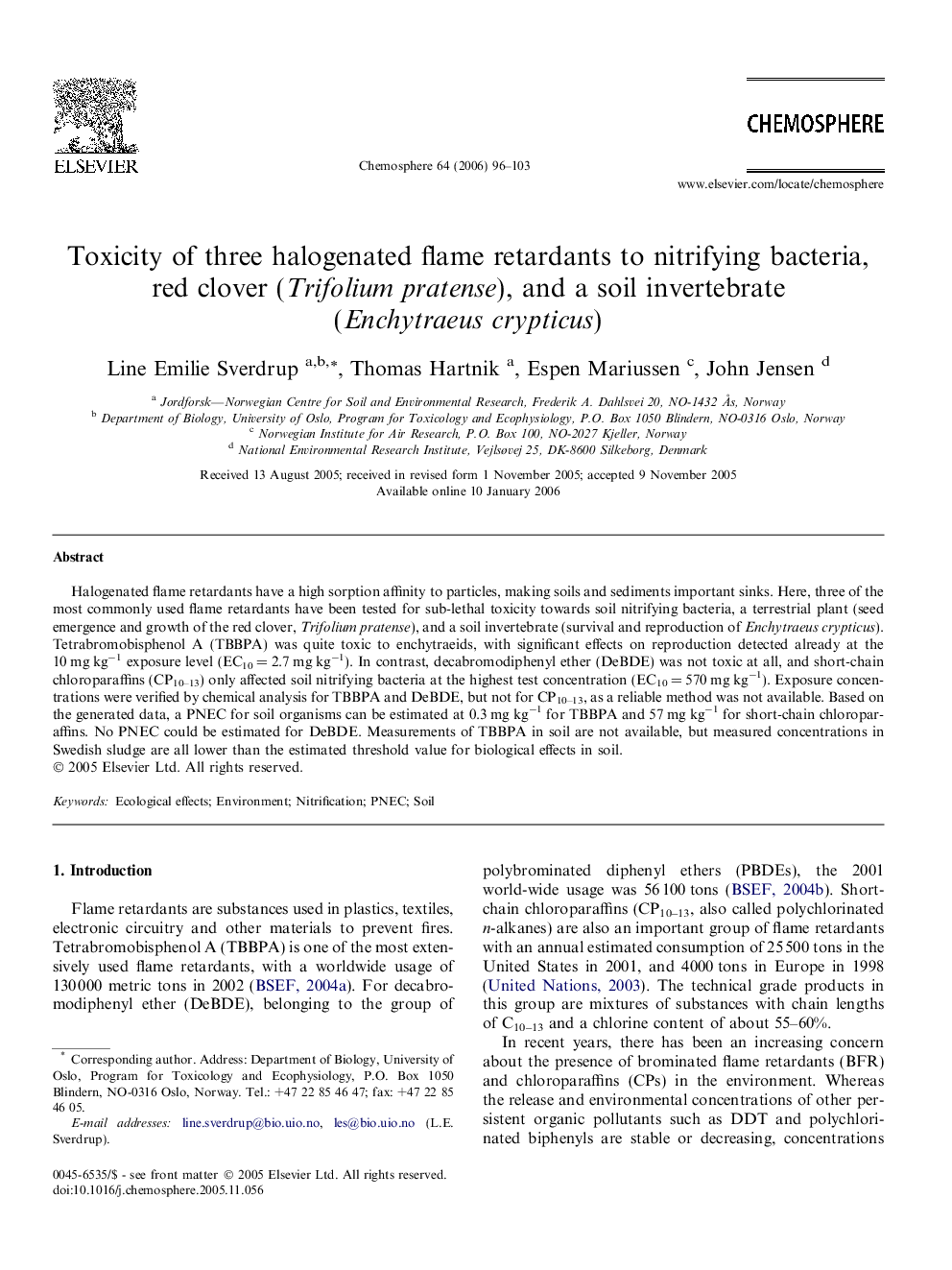| کد مقاله | کد نشریه | سال انتشار | مقاله انگلیسی | نسخه تمام متن |
|---|---|---|---|---|
| 4416827 | 1307801 | 2006 | 8 صفحه PDF | دانلود رایگان |

Halogenated flame retardants have a high sorption affinity to particles, making soils and sediments important sinks. Here, three of the most commonly used flame retardants have been tested for sub-lethal toxicity towards soil nitrifying bacteria, a terrestrial plant (seed emergence and growth of the red clover, Trifolium pratense), and a soil invertebrate (survival and reproduction of Enchytraeus crypticus). Tetrabromobisphenol A (TBBPA) was quite toxic to enchytraeids, with significant effects on reproduction detected already at the 10 mg kg−1 exposure level (EC10 = 2.7 mg kg−1). In contrast, decabromodiphenyl ether (DeBDE) was not toxic at all, and short-chain chloroparaffins (CP10–13) only affected soil nitrifying bacteria at the highest test concentration (EC10 = 570 mg kg−1). Exposure concentrations were verified by chemical analysis for TBBPA and DeBDE, but not for CP10–13, as a reliable method was not available. Based on the generated data, a PNEC for soil organisms can be estimated at 0.3 mg kg−1 for TBBPA and 57 mg kg−1 for short-chain chloroparaffins. No PNEC could be estimated for DeBDE. Measurements of TBBPA in soil are not available, but measured concentrations in Swedish sludge are all lower than the estimated threshold value for biological effects in soil.
Journal: Chemosphere - Volume 64, Issue 1, June 2006, Pages 96–103